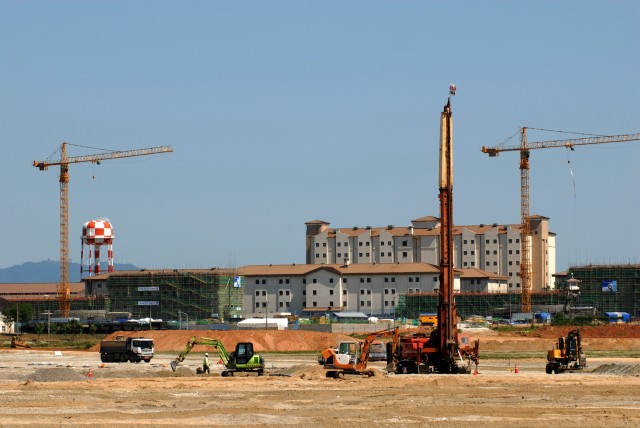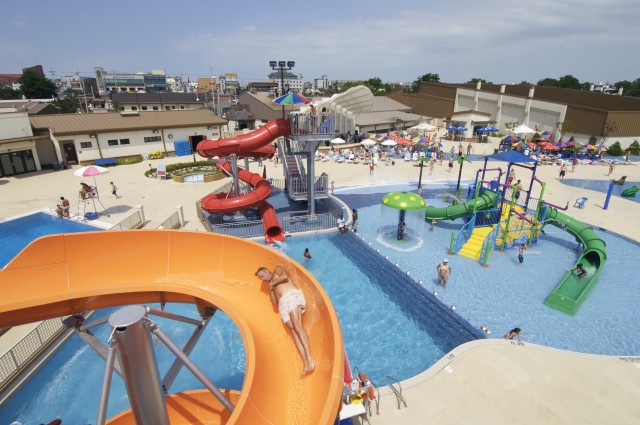WASHINGTON (AFPS, Jan. 30, 2008) - The U.S. commander in South Korea wants to re-examine the tour length for personnel assigned to the peninsula.
Army Gen. B.B. Bell said in an interview that he will speak with defense leaders this week about making more assignments to Korea accompanied tours.
"We contribute to a continuation of this separation of servicemembers from their families," he said. "Almost 90 percent of my force is still on a one-year unaccompanied tour." Only certain assignments in South Korea are two-year accompanied tours.
The U.S. assignment policy has not changed in South Korea for generations, yet the basis for making the decision for unaccompanied tours has changed tremendously. South Korea has made significant economic progress in the last 30 years and is now the 11th largest economy in the world.
South Korea is a first-world economy with first-world facilities. Thirty years ago, American families would have faced real hardships if they were assigned to Korea, but that is no longer the case, Bell said.
The general said deployments to war zones in Iraq and Afghanistan are adding to the time servicemembers spend away from their families. He told of meeting a young Army captain who had deployed to Iraq, went back to Fort Lewis, Wash., and then received orders for Korea. The officer, now assigned near the demilitarized zone, had a daughter who was 2-and-a-half years old. "He had only seen her for eight months," Bell said. "We can do better than that. We need to look at accompanied tours."
A number of aspects complicate any proposal changing the assignment policy, the general said, and he will discuss the whole situation with senior leaders on the Joint Staff and the Office of the Secretary of Defense. "I am arguing for a slow, but real movement to more accompanied tours over there," he said.
Under agreements with the Republic of Korea, U.S. forces are moving out of camps established at the end of the Korean War in 1953. As the U.S. forces move from the DMZ and from the headquarters in Seoul, U.S. officials have the perfect opportunity to re-examine the short-tour approach to assignments, he said.
There are downsides, the general said. More infrastructure such as schools, clinics, day care centers and shopping facilities, would be needed. Defense leaders would have to determine if troops in South Korea on long tours would be available for deployments out of the country. "The global force pool issue has to be a part of any decision," he said. All these issues would be subject to discussions with South Korean allies.
Families are indirectly telling defense leaders they want the long tours. Spouses are free to travel to Korea already, Bell said.
"Over 2,000 families have traveled there to be with their servicemembers and to connect with servicemembers in spite of the fact that they are not authorized," he said. "They would rather be together as a family with some complexities than spend another year apart. They are speaking with their feet and their passports."
Any change would take years to accomplish, Bell said. It would be hand-in-hand with consolidation of U.S. forces in the country. That movement is proceeding, as South Korea takes on the major portion of the ground defense of the nation.
The stationing of American troops in South Korea was based on the theory that U.S. forces would block the traditional invasion corridors across the DMZ as a signal that the United States was "ready to fight tonight," Bell said.
The western corridor already has been turned over to the South Korean 1st Infantry Division, and the theory now is that American forces would consolidate at main operating bases. The biggest is scheduled to be built in Pyongtaek - out of artillery range, but not missile range, of North Korean forces on the DMZ.
More than 1,000 trucks a day are working at Pyongtaek, adjacent to Camp Humphries, to establish the base.
"This allows us to consolidate, while at the same time doing something that is desperately needed: changing the quality of life for American troops in South Korea," he said.
The move also takes American troops out of high-visibility areas, and places them in areas where training can take place. The move will cost $10 billion, with South Korea paying the lion's share of it.
(Jim Garamone writes for the American Forces Press Service.)




Social Sharing